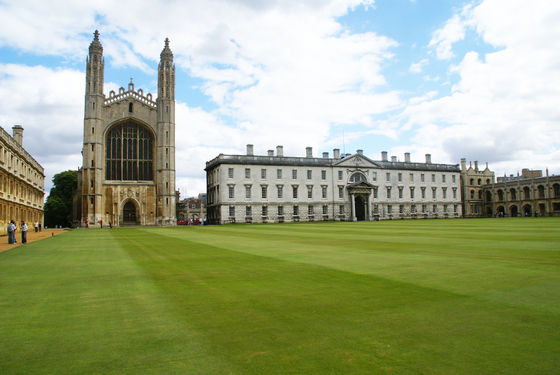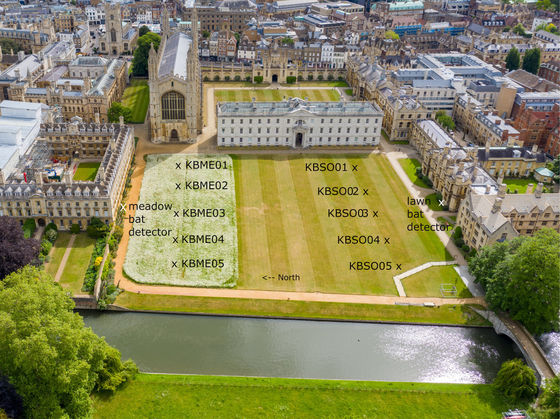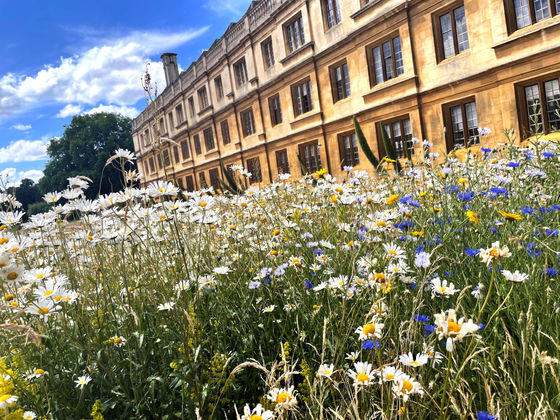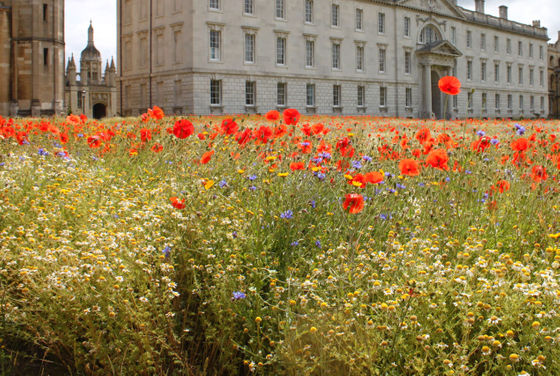British prestigious university proves in experiments that replacing lawn with `` wild flowers '' brings great benefits to the environment

Replacing the lawn, which is a specialty of King's College, Cambridge University, England, with wild grass and flowers, the vegetation becomes richer and the number of living things including species that need protection increases. It was reported that there were many benefits such as reduced CO2 emissions due to reduced CO2 emissions.
Urban wildflower meadow planting for biodiversity, climate and society: An evaluation at King's College, Cambridge - Marshall - 2023 - Ecological Solutions and Evidence - Wiley Online Library
A break from the lawn: can an iconic meadow seed wider change?
https://www.cam.ac.uk/stories/kings-wildflower-meadow-a-break-from-the-lawn
In Western society, where lawn care is a social norm, a splendid lawn is a symbol of the wealth and status of landlords and landlords, and has been regarded as an essential element in maintaining the beauty of the townscape. Against this backdrop of culture, lawns have been maintained at King's College, Cambridge University since 1772, but carefully mowed lawns are more expensive to manage than grasslands with wild grasses and are less biodiverse. It has the disadvantage of lacking sexuality.

by
To explore the impact of replacing urban lawns with grasslands, King's College began an experiment in 2019 planting wildflowers instead of grass in about 40% of backyards, affectionately known as 'King's Back Lawn.' I did. The grasslands were managed as much as possible according to the traditional Celtic custom of Lammas , and were pruned to a height of about 350mm on two occasions, August 1st and December. rice field. During peak visitor season, unwanted weeds were removed by hand.
Meanwhile, the rest of the lawn will be mowed twice a week from March to September, once a week from October to December, and every other week in January and February. Fertilizers were applied in summer and spring, and herbicides were applied once or twice a year. The amount of herbicide applied was kept to a minimum, pesticides were not used, and watering was avoided as much as possible.
Below is a picture of the courtyard of King's College taken from above, with the grassy section on the left and the grass section on the right.

In 2021, about two years after the start of the experiment, when we compared the grass and grasslands, we found that the diversity of plant species in the grasslands was 3.6 times more abundant than in the grasslands. There were 84 types of plants collected in the research, but only 33 of them were brought in by human hands, and the rest were all grown naturally. In addition, there are more living things besides plants in the grassland, and the total biomass of invertebrates living in the grassland is 25 times that of the grass.
Comparing the insect populations, the number of spiders and stink bugs caught in the collection pit was 3.8 times higher in the grassland than in the grassland, and the frequency of insect-eating bats was 3.1 times higher in the grassland. This means that the food chain is well-balanced from bottom to top.

In addition, grasslands are easier to care for because they require less mowing and fertilization than lawns, and if the impact is converted to carbon dioxide emissions, 1.36 tons per hectare can be reduced annually. That's the equivalent of one round-trip flight from London to New York. If the grass grows longer due to climate change, the amount of mowing required to maintain the lawn will increase accordingly, and the gap between lawn and grassland will continue to grow in the future.
Grasslands not only benefit wildlife and the global environment, but also directly benefit nearby residents. The research team calculated the solar reflectance of grassland and lawn based on aerial photographs and satellite images, and found that grassland has a 25% higher reflectance than grass. The urban

Cicely Marshall of Cambridge University's School of Plant Sciences said, 'We have found that grasslands are surprisingly beneficial for biodiversity, especially for such a large change in such a small area. I was surprised,' he said.
Related Posts:
in Science, Posted by log1l_ks







